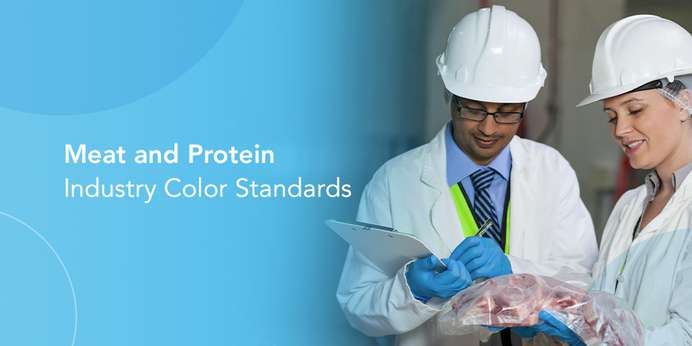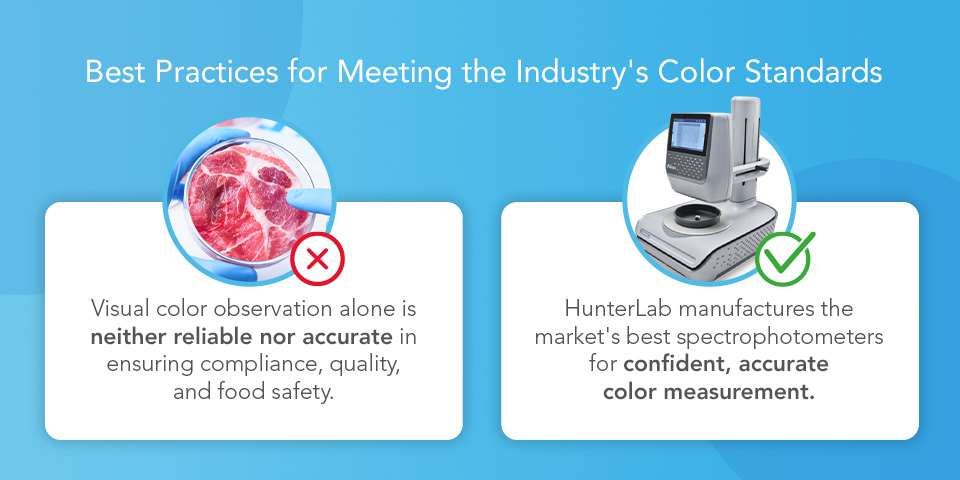
The color of meat and proteins significantly impacts regulatory compliance, grading, customer perception of quality, and safe consumption. Maintaining color within the industry standards helps ensure your facility meets quality expectations, reduces product waste, and supports higher customer satisfaction.
Why Color Standards Matter in the Meat and Protein Industry
Both the Food and Drug Administration (FDA) and the United States Department of Agriculture (USDA) regulate meat and meat products. The USDA enforces color standards for foods subject to the Federal Meat Inspection Act, Poultry Products Inspection Act, and Egg Products Inspection Act. All others fall under FDA regulations, including game meats, processed meats, and plant-based meat alternatives with color additives. Failure to comply with the rules leads to substantial penalties.
Color also plays a role in certified meat quality. For example, the USDA assesses the color of the longissimus dorsi — the ribeye muscle — when determining its grade. Similarly, pork quality is partially determined by the color of the body cavity's interior muscles.
Additionally, color remains a primary purchasing determinant for consumers. Meat and protein products with appealing colors look fresher and healthier. Those without the required oxygen exposure don't form the oxymyoglobin pigment that creates a pleasing cherry-red hue that encourages consumption.
Meat color changes can also indicate spoilage, typically presenting as either fading or darkening. Products displaying these characteristics are unsafe to eat and can cause illness.


